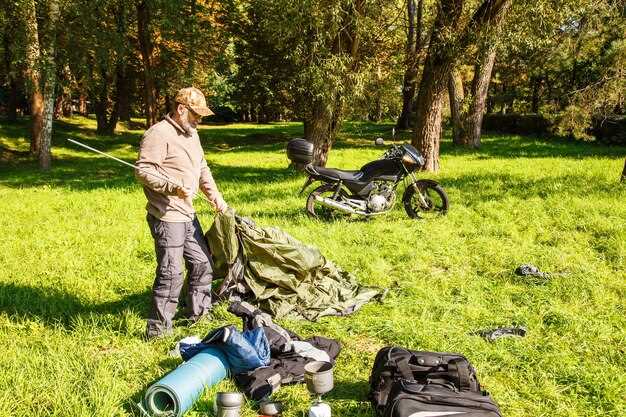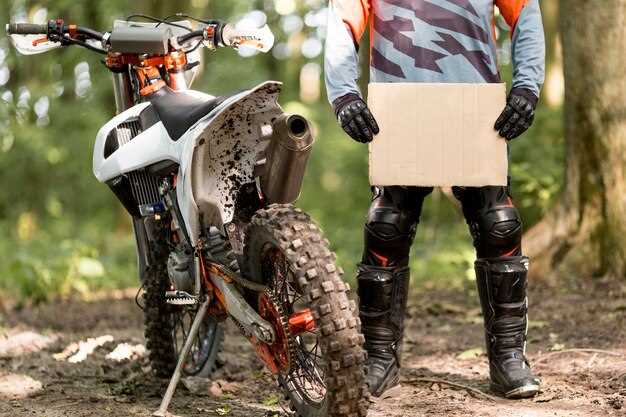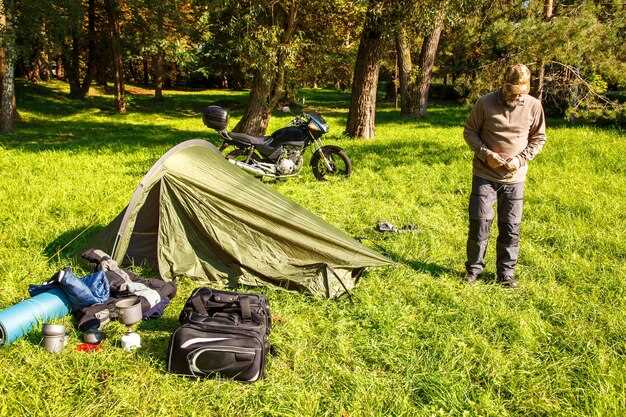
Embarking on a motorcycle camping trip combines the thrill of riding with the serenity of nature, offering a unique way to explore the great outdoors. However, to maximize your experience, careful planning and the right gear are essential. Understanding the essentials of motorcycle camping gear setup can ensure comfort and safety while on the road.
When it comes to moto camping, the balance between weight and functionality is crucial. Unlike traditional camping where you can rely on a vehicle with ample storage, motorcycle camping requires you to pack wisely. Each piece of gear must serve multiple purposes to keep your load manageable without sacrificing the essentials.
From choosing the right camping tent that fits your bike to selecting compact cooking equipment, every detail counts. Proper gear setup not only enhances your comfort but also impacts your riding experience. In the following sections, we’ll cover essential tips to help you organize your motorcycle camping gear effectively, making your outdoor adventures enjoyable and hassle-free.
Choosing the Right Tent and Sleeping Systems for Motorcyclists
When venturing into the great outdoors on a motorcycle, selecting the appropriate tent and sleeping system is crucial for a comfortable experience. Consider the following factors to make an informed choice:
- Weight and Packability: Opt for lightweight tents that easily fit on your bike. Look for options that fold compactly to save space.
- Weather Resistance: Ensure your tent is suitable for various weather conditions. Waterproof materials and a robust rainfly are essential for protection against the elements.
- Setup Ease: Choose a tent that is quick to pitch. Single-pole or pop-up designs can save you time when setting up camp after a long ride.
- Size and Capacity: Consider whether you’ll be camping solo or with a companion. A 2-person tent typically provides enough room for gear and comfort.
- Ventilation: Proper airflow is important to prevent condensation. Look for tents with mesh panels and adjustable vents.
In addition to a suitable tent, your sleeping system plays a vital role in ensuring restful nights outdoors. Here are key components to consider:
- Sleeping Bag: Choose a sleeping bag appropriate for the temperature range you expect. Mummy bags offer better insulation and are compact, while rectangular bags provide more space.
- Sleeping Pad: Invest in a quality sleeping pad for insulation and comfort. Air pads are lightweight and packable, while foam pads provide durable, consistent support.
- Inflatable Pillows: Consider carrying a small inflatable pillow or a stuff sack filled with clothes for added neck support while sleeping.
- Ground Sheet: A lightweight ground sheet can protect your tent floor from damage and moisture, extending its lifespan.
Testing your gear before embarking on an outdoor adventure is advisable. Set up your tent, sleep in the bag, and assess the overall comfort during a short trip. Proper preparation enables a hassle-free experience, allowing you to focus on enjoying the ride and the beauty of nature.
Maximizing Storage Space: Packing Techniques for Motorcycle Camping

When embarking on a motorcycle camping adventure, efficient packing is crucial due to limited storage space. Here are some effective techniques to maximize storage and streamline your gear.
First, consider the use of compression bags. These bags allow you to condense sleeping bags and clothing, reducing the overall volume while keeping your items organized. Choose lightweight options that can be rolled up after use to save additional space.
Next, utilize modular packing systems. Organize gear into smaller, categorized bags that can easily fit into saddlebags or a tail pack. For example, keep cooking equipment separate from clothing for easy access and reduced rummaging.
Additionally, take advantage of every inch of available space on your motorcycle. Use spaces such as handlebar bags for quick-access items like snacks or maps. The area beneath the seat can hold valuable tools or emergency gear.
Consider the weight distribution when packing your moto setup. Place heavier items towards the center of your bike and lower down to maintain balance and improve handling. This practice not only enhances safety but also optimizes storage space.
Lastly, incorporate multifunctional gear into your packing strategy. For instance, a camp chair that doubles as a backpack or a cooking pot that can be used as a storage container can significantly reduce the number of items you need to carry.
By implementing these packing techniques, you can ensure that all necessary camping gear fits efficiently within your motorcycle’s limited space, allowing for a more enjoyable and hassle-free outdoor experience.
Setting Up a Compact Cooking Station on Your Bike

Creating a compact cooking station on your motorcycle can enhance your camping experience, allowing you to prepare meals that fuel your outdoor adventures. Start by selecting lightweight and portable cooking gear designed specifically for moto camping.
One essential item is a compact stove. Opt for a small canister or a lightweight multi-fuel stove that can easily fit into your bike’s storage compartments. Consider models that can boil water quickly and have a stable base for safety.
Pans and cookware should be chosen for their lightweight and stackable designs. Titanium or aluminum pots and pans are ideal as they conduct heat well and are easy to clean. Look for nesting cookware sets that take up minimal space when packed.
Don’t forget utensils. A compact spork or a multi-tool equipped with knife, spoon, and fork functionalities can save space. Additionally, a foldable cutting board is practical for meal prep while being easy to store.
Fuel is crucial–bring enough for your trip but avoid overpacking. Store your fuel canisters securely to prevent leaks, and consider using a fuel bottle system that can be refilled. Always keep them in a temperature-controlled compartment.
To maximize efficiency, choose recipes that require few ingredients and minimal cooking time. Prepping meals ahead of time and using ingredients that already come in convenient packaging can streamline the cooking process.
Finally, set up your cooking station in a practical area away from your sleeping setup. Ensure it’s on a flat, stable surface to minimize accidents. With careful planning and consideration, your compact cooking station will be an integral and enjoyable part of your motorcycle camping experience.

